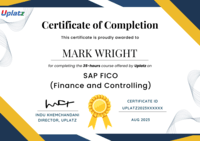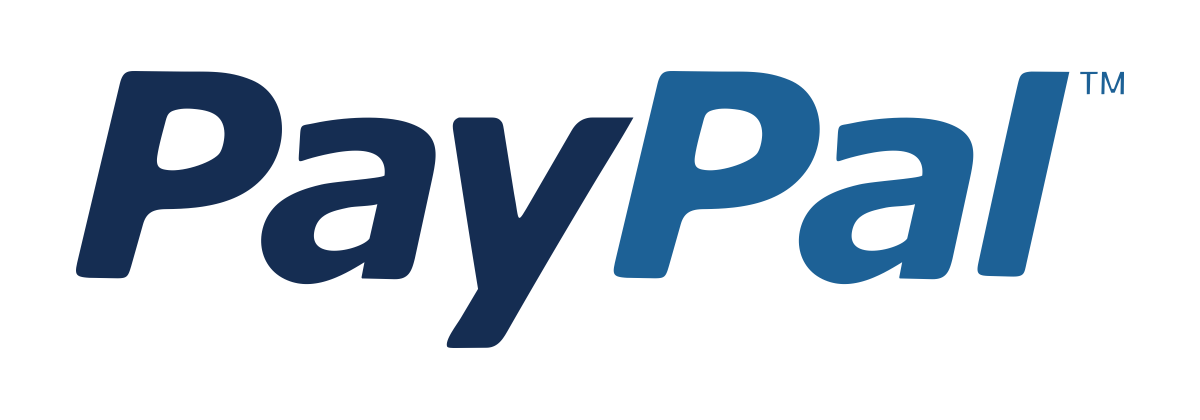Mixpanel
Learn product analytics with Mixpanel to track user behavior, measure engagement, and optimize product growth with data-driven insights. Price Match Guarantee
Full Lifetime Access
Access on any Device
Technical Support
Secure Checkout
Course Completion Certificate
Price Match Guarantee
Full Lifetime Access
Access on any Device
Technical Support
Secure Checkout
Course Completion Certificate
 96% Started a new career
BUY THIS COURSE (
96% Started a new career
BUY THIS COURSE (GBP 12 GBP 29 )-
 86% Got a pay increase and promotion
86% Got a pay increase and promotion
Students also bought -
-

- Agile and Scrum
- 27 Hours
- GBP 12
- 880 Learners
-

- Google Analytics
- 20 Hours
- GBP 12
- 372 Learners
-

- Web Analytics
- 3 Hours
- GBP 12
- 86 Learners

Mixpanel: Product Analytics & Growth Optimization is a comprehensive, self-paced online course designed for product managers, data analysts, marketers, UX designers, and growth strategists who want to gain a deep understanding of user behavior and data-driven product improvement. Whether you are working in a startup, enterprise, or SaaS environment, this course provides the knowledge and hands-on experience needed to use Mixpanel effectively to measure engagement, track retention, and optimize growth strategies.
At its foundation, Mixpanel is a leading product analytics platform built to move beyond traditional metrics like page views and sessions. Instead, it focuses on event-based tracking, allowing teams to capture specific user actions—such as signups, clicks, purchases, or feature usage—and transform them into meaningful insights. This approach helps organizations answer critical product questions such as:
-
Which features keep users engaged and drive long-term retention?
-
Where do users experience friction or drop off in their journey?
-
How do different cohorts of users behave over time?
-
What is the impact of product updates or marketing campaigns on engagement?
By learning Mixpanel, you gain the ability to connect these questions to measurable data and uncover insights that guide informed product and marketing decisions.
This course begins with the fundamentals of event-based analytics, guiding you through the setup process, including how to implement tracking plans, structure event data, and configure Mixpanel to collect accurate, real-time information. You will explore how to plan event taxonomy strategically, ensuring that your data model aligns with your organization’s goals and user journeys. Early lessons focus on understanding key metrics—such as active users, retention rate, and engagement depth—and how to visualize them effectively within the Mixpanel interface.
As you progress, the course dives into advanced analytical techniques, such as segmentation, funnel analysis, cohort tracking, and retention studies. You’ll learn how to build and interpret funnels that represent the sequence of user actions, helping you identify where users are dropping off and what optimizations can improve conversions. Through step-by-step guidance, you’ll also explore how to measure retention—an essential metric for assessing long-term product success—by analyzing how user cohorts behave over different time frames.
Throughout the course, you’ll gain hands-on experience through real-world projects and practical exercises. You will analyze sample datasets, create interactive dashboards, and interpret key product metrics to uncover trends and growth opportunities. These exercises simulate professional scenarios, helping you learn how to turn raw data into clear insights and actionable recommendations.
A key focus of this course is teaching you how to use Mixpanel for experimentation and optimization. You’ll discover how to design A/B tests to compare product variations, measure the impact of new features, and validate hypotheses with statistical confidence. You’ll also learn to use Mixpanel’s automation and reporting tools to share insights across teams—ensuring that marketing, product, and design decisions are all backed by reliable data.
Integration is another vital part of Mixpanel’s power. This course shows how to connect Mixpanel with other tools—such as CRMs, marketing automation platforms, and data warehouses—creating a unified analytics ecosystem. You’ll learn to sync user data across systems to build richer customer profiles and enhance personalization strategies. Whether your goal is to improve onboarding flows, reduce churn, or boost engagement, these integrations enable you to make smarter, faster, and more holistic business decisions.
By the end of the course, you’ll not only be proficient in using Mixpanel but also confident in applying data-driven thinking to optimize product performance. You will be able to design meaningful analyses, interpret results critically, and communicate findings effectively to cross-functional teams.
What You Will Gain
This course is designed to help you master Mixpanel through practical, applicable learning. By completing it, you will be able to:
-
Track and analyze user behavior using event-based analytics: Learn how to implement Mixpanel tracking codes and define key user actions to capture accurate, granular data.
-
Build and interpret funnels to understand drop-offs: Create step-by-step visualizations of user flows to identify where and why users abandon critical processes.
-
Measure retention and cohort behavior: Understand how to group users by shared characteristics or actions, then track how their engagement changes over time.
-
Create dashboards and share insights with teams: Design dashboards that summarize key performance indicators (KPIs) and communicate insights clearly across departments.
-
Run experiments to test product features and marketing campaigns: Apply A/B testing and controlled experiments to validate design and feature hypotheses.
-
Leverage segmentation for targeted analysis: Filter user data by demographics, device type, behavior, or engagement level to uncover deep insights about user groups.
-
Automate reporting and alerts: Learn to schedule reports and set automated triggers for critical metric changes.
-
Integrate Mixpanel with external platforms: Connect Mixpanel with Google Analytics, HubSpot, or Salesforce for unified data management.
Each of these outcomes builds your analytical confidence and ensures that you can transform user data into strategic growth opportunities.
Who This Course Is For
This course is ideal for professionals who want to use analytics to drive meaningful business and product decisions. It’s designed for:
-
Product Managers who aim to make data-driven decisions and identify the features that drive engagement and retention.
-
Data Analysts who need to interpret behavioral data and deliver actionable reports for stakeholders.
-
Marketers who want to optimize campaigns and user journeys using real engagement data rather than assumptions.
-
UX/UI Designers validating how design changes influence user behavior and conversion outcomes.
-
Startups and Entrepreneurs tracking growth metrics, measuring feature adoption, and understanding user retention dynamics.
-
Educators and Students in business, data science, or digital design who want practical analytics experience for professional development.
Course Highlights
-
Structured, self-paced format: Learn at your own pace with step-by-step tutorials and applied projects.
-
Real-world scenarios: Work with practical examples drawn from SaaS, e-commerce, and digital marketing contexts.
-
Interactive exercises: Apply what you learn immediately through guided tasks and data simulations.
-
Data storytelling focus: Learn to present analytical findings clearly and persuasively to non-technical audiences.
-
End-to-end coverage: From setup and tracking to reporting and optimization, the course provides a complete learning journey.
Hands-On Projects
To reinforce learning, you’ll complete several practical exercises, such as:
-
Tracking Plan Setup: Design and implement a custom event-tracking strategy for a sample product.
-
Funnel Analysis Project: Build a conversion funnel for an e-commerce site and identify optimization opportunities.
-
Retention Study: Conduct a cohort analysis to explore user engagement trends and retention drivers.
-
Experiment Design: Run an A/B test on a new feature and evaluate its impact on key product metrics.
-
Dashboard Presentation: Create and share a Mixpanel dashboard summarizing core KPIs with stakeholders.
These projects ensure you graduate from the course with a portfolio that demonstrates applied product analytics expertise.
Learning Outcomes
By the end of this course, you will have a comprehensive understanding of how to use Mixpanel for data-driven product management and growth optimization. You will be able to track events, analyze user behavior, measure retention, and translate data into clear recommendations that improve user experience and business performance.
Whether your goal is to enhance engagement, reduce churn, or test new product ideas, this course gives you the analytical mindset, technical skills, and strategic framework needed to make informed, measurable decisions in any digital environment.
By the end of this course, you will be able to:
-
Implement Mixpanel event tracking in apps and websites
-
Build funnels and measure user conversion rates
-
Perform retention and cohort analysis
-
Run A/B tests and measure campaign effectiveness
-
Create product dashboards for stakeholders
Course Syllabus
Module 1: Introduction to Mixpanel
Module 2: Setting Up Event Tracking
Module 3: Funnels & Conversion Analysis
Module 4: Retention & Cohort Analysis
Module 5: Segmentation & User Behavior Insights
Module 6: Dashboards & Reporting
Module 7: A/B Testing & Experiments
Module 8: Real-World Projects (E-commerce Funnel, Mobile App Retention Study)
Module 9: Interview Questions & Answers
Upon completion, learners will receive a Certificate of Completion from Uplatz validating their expertise in product analytics and growth optimization with Mixpanel.
This course prepares learners for roles such as:
-
Product Analyst
-
Growth Marketer
-
Business Intelligence Specialist
-
Product Manager
-
Data Analyst (Digital Products)
-
What is Mixpanel and how does it differ from Google Analytics?
Answer: Mixpanel is event-based, focusing on user actions within a product, while Google Analytics primarily tracks page views and sessions. -
What are funnels in Mixpanel?
Answer: Funnels track the steps users take toward a goal (e.g., signup → add to cart → checkout) and show where drop-offs occur. -
How does retention analysis work in Mixpanel?
Answer: Retention analysis measures how many users return and perform key actions over time, helping identify long-term engagement. -
What is cohort analysis?
Answer: Cohort analysis groups users by shared characteristics (e.g., signup date) to compare behavior patterns and retention rates. -
Can Mixpanel integrate with other platforms?
Answer: Yes, Mixpanel integrates with tools like Segment, Amplitude, HubSpot, Salesforce, and Slack. -
How do you define an event in Mixpanel?
Answer: An event is any user action you want to track, such as a button click, purchase, or video play. -
What’s the difference between segmentation and cohorts?
Answer: Segmentation analyzes users based on attributes or actions, while cohorts track groups of users over time. -
How can Mixpanel help in A/B testing?
Answer: Mixpanel measures the performance of test variants by analyzing user behavior, conversions, and retention differences. -
What challenges might you face with Mixpanel?
Answer: Challenges include ensuring correct event tracking setup, data overload, and maintaining data quality. -
How would you use Mixpanel in a SaaS product?
Answer: By tracking feature adoption, analyzing onboarding funnels, monitoring churn, and running experiments to improve retention.









